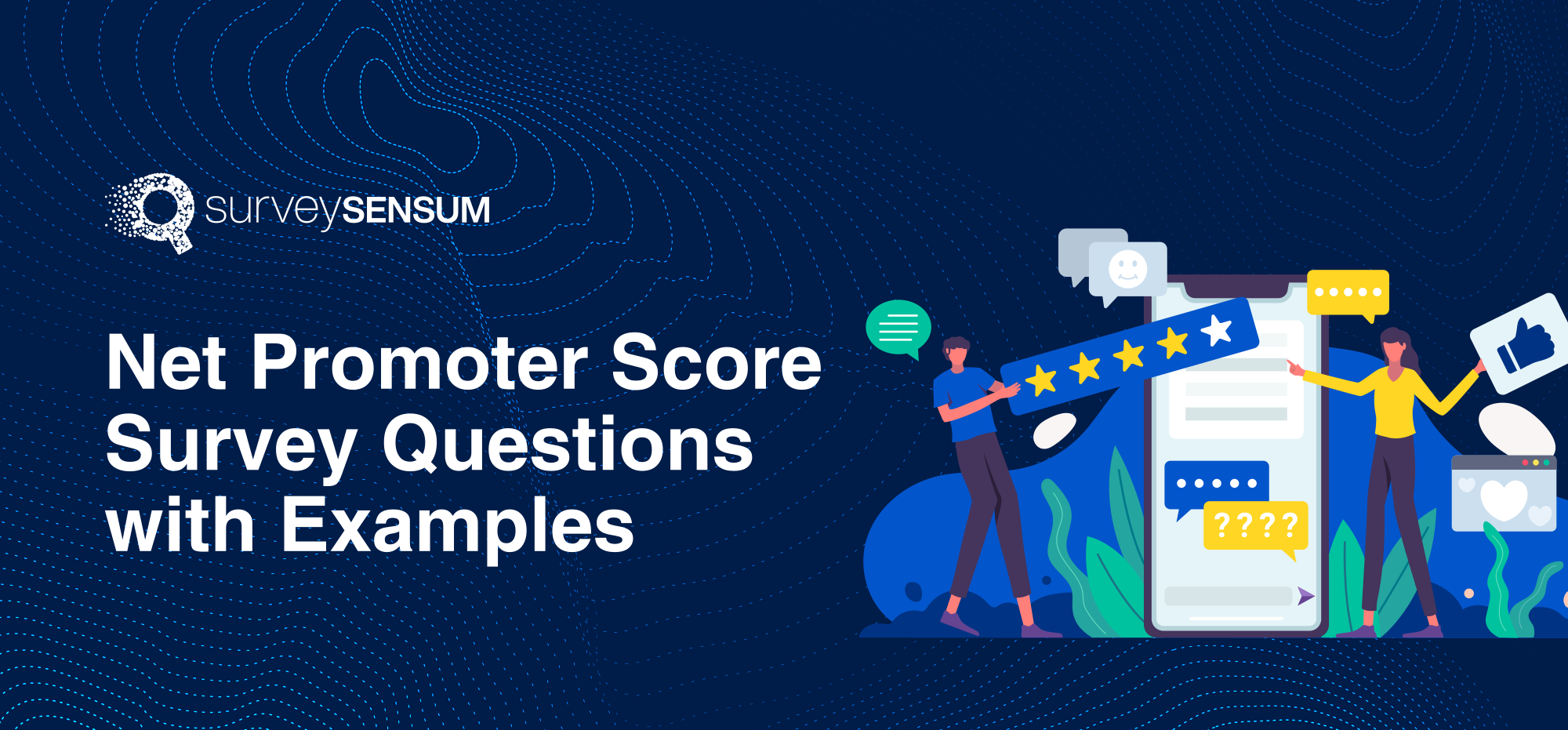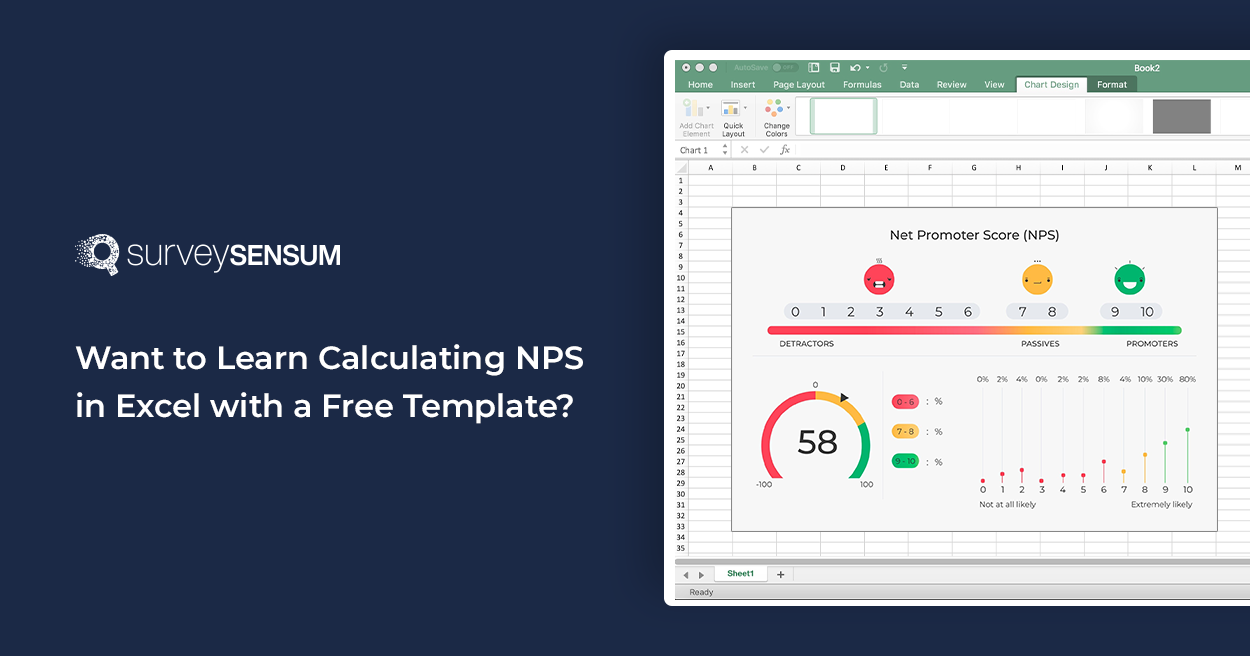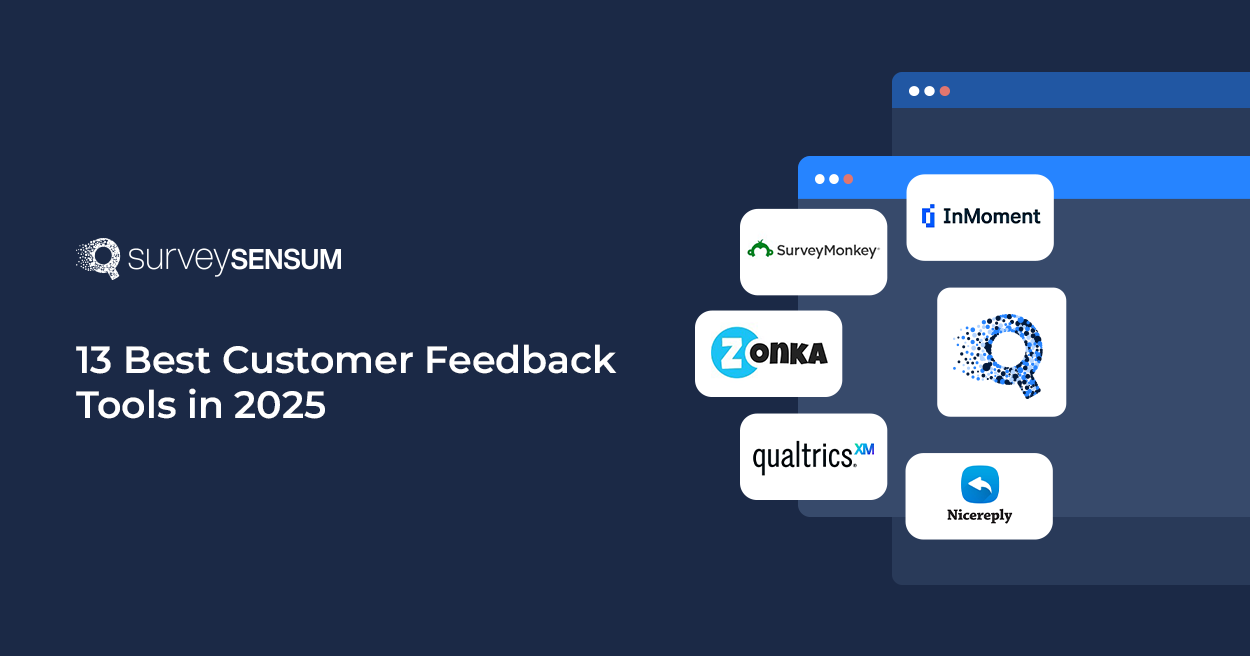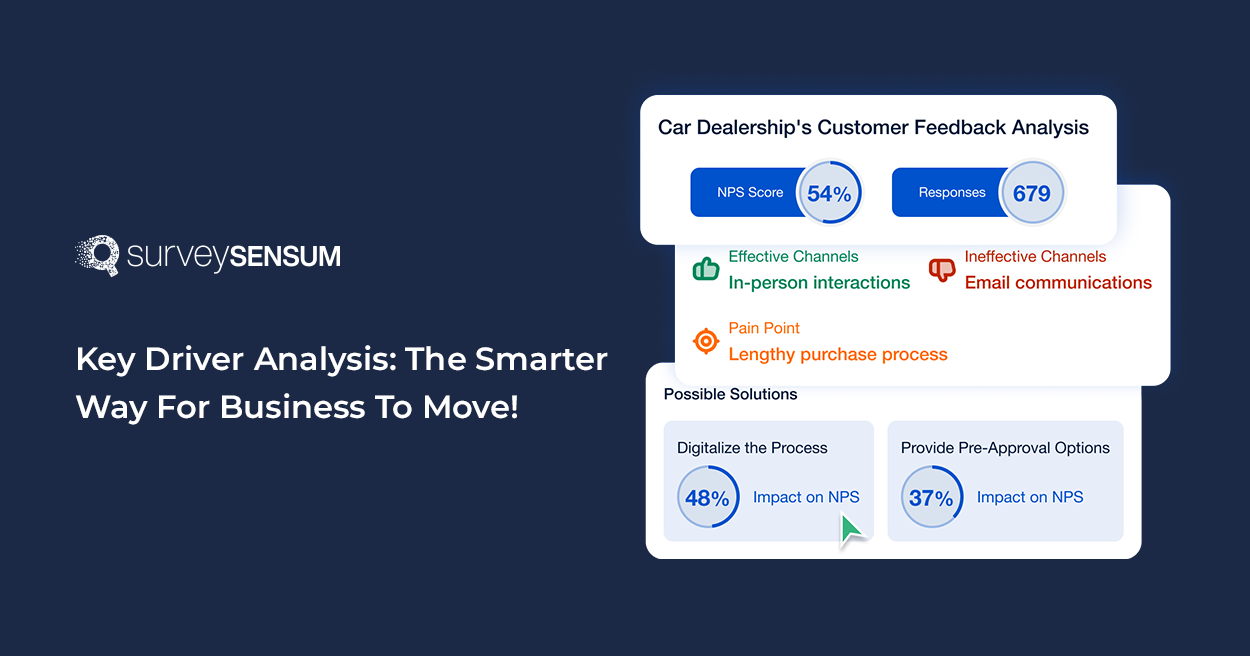
It is crucial for a business to focus on giving services/products that satisfy its customers. The more satisfied the customers are, the more brand loyalty will be.
So, how can a business understand whether its customers are satisfied or not?
Customer feedbacks! Kinda obvious, right? You can run NPS surveys and analyze the results to understand.
But there’s a catch!
Running surveys with some random questions ain’t gonna work. Your questions should be relevant to customers and reach them at the right time. And since NPS surveys can provide valuable feedback that can help elevate your customer experience and propel your business forward, it is crucial to ask the right questions.
And that’s what we are focusing on here today.
You will understand the components and types of NPS survey questions, examples, and when to use them.
Let’s get started.
What is the Net Promoter Score?
Net Promoter Score (NPS) is a CX metric that measures customer loyalty.
It allows you to assess the likelihood of customers recommending your brand to others – which is a crucial factor in achieving long-term success and improving customer retention. It is a powerful predictor of your ability to retain disgruntled customers and win new ones. And it also helps you identify what is working for you and what is not!
Components of NPS Survey Question
1. Loyalty Question
The first component is the NPS Loyalty question, which asks customers to rate their experience with a business, product, or service on a scale of 1 to 10.
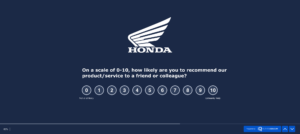
The question is answered on an 11-point rating scale, ranging from 0 (not at all likely) to 10 (extremely likely). And the respondents to these questions are divided into three categories called Promoters, Passives, and Detractors based on their responses.
2. Open-Ended Question
The second component is an open-ended question that seeks to understand the reasons behind the customer’s rating. This question provides customers with an opportunity to provide specific feedback about what they liked or disliked about the experience.
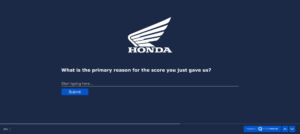
Together, these two components provide a comprehensive view of customer loyalty and feedback, which can be used to improve the overall customer experience.
But is it that easy? — No
The beauty of the NPS survey lies in asking the RIGHT QUESTION.
Asking the right NPS question is critical to ensure that you are capturing meaningful feedback from your customers. It can impact the validity of your NPS score and ultimately determine the effectiveness of your customer retention strategies.
Therefore, the importance of asking the right NPS question cannot be overstated.
Create your First NPS Survey
How to Choose the Right NPS Survey Question!
The NPS question is not a one-size-fits-all approach, and it should be customized based on the business and its offerings to gather the most genuine feedback from customers.
By customizing the NPS loyalty component to suit your business, you can elicit more genuine feedback from customers. This approach is particularly beneficial for businesses with unique operational structures like family partnership agreements.
So, let’s talk about the types of NPS Questions
1. NPS Loyalty Question
The NPS Loyalty question gathers customer ratings from the range of 0-10, which are further divided into Promoters, Passives, and Detractors.
There are two main types of NPS Loyalty Questions:
-
Relationship NPS Question:
This type of NPS loyalty question asks the customer to rate their overall loyalty toward the brand. It typically measures the likelihood of the customer recommending the company to their friends and family.
There are several types of Relationship NPS questions that can be used to gauge customer loyalty and satisfaction over time. For instance,
- Overall Relationship NPS: It asks customers to rate their overall likelihood of recommending the company to others.
- Brand NPS: It focuses on the customer’s loyalty to the brand rather than just the company as a whole.
- Product NPS: It focuses on the customer’s loyalty to a specific product offered by the company.
- Service NPS: It focuses on the customer’s loyalty to a specific service provided by the company.
- Customer Support NPS: It focuses on the customer’s loyalty to the company’s customer support team and services.
By using different types of Relationship NPS questions, businesses can gain more targeted insights into specific areas of their offerings and customer experience.
-
Transactional NPS Question:
This type of NPS loyalty question asks customers to rate their loyalty toward the brand based on a specific transaction or interaction. It measures the satisfaction of the customer with that specific experience.
There are various types of transactional NPS questions that can be used to gather customer feedback. Here are some examples of Transactional NPS Questions per industry –
Patient Experience:
- How likely are you to recommend us to others based on your recent visit, on a scale of 0-10?
- How likely are you to recommend us to others based on the care you received during your recent stay, on a scale of 0-10?
Insurance Claim:
- How likely are you to recommend us based on your recent claims experience with us, on a scale of 0-10?
- On a scale of 0-10, how likely are you to recommend us to others based on the ease of filing your recent claim?
Retail Experience:
- How likely are you to recommend us to others based on your recent shopping experience, on a scale of 0-10?
- On a scale of 0-10, how likely are you to recommend us to others based on the quality of our products and services?”
- How likely are you to recommend us to others based on the level of customer service you received during your recent visit, on a scale of 0-10?
Automotive Experience:
- On a scale of 0-10, how likely are you to recommend our service department to others based on your recent maintenance or repair experience?
- Based on your recent experience purchasing a vehicle from us, how likely are you to recommend our dealership to a friend or family member on a scale of 0-10?
- How likely are you to recommend our dealership to others based on the professionalism and helpfulness of our sales team during your recent visit, on a scale of 0-10?”
B2B:
- On a scale of 0-10, how likely are you to recommend our services to others based on your recent interaction?
- How satisfied are you with the timeliness of the service you received?
These are just a few examples, and businesses can customize their transactional NPS questions to suit their specific needs and gather relevant feedback from customers.
Note: Both of these types of questions (Relationship NPS and Transactional NPS) are used to calculate NPS and measure customer loyalty to identify areas of improvement for the company. The main difference is that the relationship question measures overall loyalty, while the transactional question measures loyalty based on a specific interaction.
2. Follow-Up (Open-Ended) NPS Questions
The purpose of open-ended questions in Net Promoter Score Surveys is to understand the reasoning behind customer ratings. These questions encourage customers to provide a detailed response about their experience or feedback.
Here are some examples:
Open-Ended NPS Question Examples for PROMOTERS
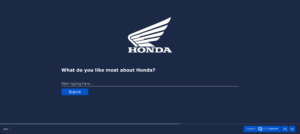
- What was the reason for choosing our product instead of our competitors?
- How does our product fulfill your requirements?
- What do you like most about our (company or product name)?
There is another allied benefit of this question is that it gives you user-generated content that can be used as testimonials. These customer testimonials can be used in landing pages, case studies, and other marketing collaterals, even to create brand advocates. where customer proof is necessary.
Open-Ended NPS Question Examples for PASSIVES
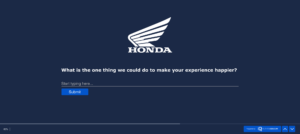
- What is the one thing we could do to make your experience happier?
- What do you like least about our (company or product name)?
It forces customers to open up and speak at length and in detail about the experience that they had.
Open-Ended NPS Question Examples for DETRACTORS
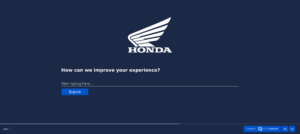
- What was disappointing in your experience with us?
- How can we improve your experience?
- What’s the one thing we can add that would make the product or service better for you?
Here the question is specifically focusing on the improvement aspect. It will persuade the passive customer to cite specific instances in service or product features that they wish were better.
These follow-up questions can help businesses gather more insights about their customers and their experience and can ultimately help improve customer loyalty and retention.
Now the question is, how should you end your NPS survey?
End the NPS survey with a THANK YOU note
Although the NPS survey is fairly quick and easier to respond to, it is implied that we thank the customers for taking the time and energy to do it. It is an act of good faith that will make the customers fill up the next time you send an NPS survey.
You must create 3 different types of thank-you notes for each category: Promoters, Passives, and Detractors. Here are the templates for each.
-
Thank you note for PROMOTERS
“We appreciate your feedback. It’s wonderful to know that you appreciate us (company/product/service). Your feedback helps us in identifying new possibilities to enhance (company/product/service) and make sure that you have the best experience.”
-
Thank you note for PASSIVES
“Thank you for your feedback. Our objective is to create the most exceptional product possible, and your opinions are crucial in helping us to identify opportunities for improvement.”
-
Thank you note for DETRACTORS
“Thanks for sharing your feedback. We value all ideas and suggestions from our customers in high regard, irrespective of being positive or critical. Our team may contact you shortly to understand thoroughly how we can continue to enhance (our product or service) to exceed your expectations.”
Create your First NPS Survey
Is there anything else?
Indeed because now comes the part of taking a POST-SURVEY FOLLOW-UP.
How to Take Post-Survey Follow-Up?
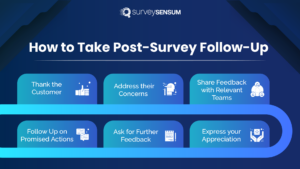
Taking post-survey follow-up is an essential step in the Net Promoter Score process, as it allows you to close the loop with customers and take action based on their feedback.
Here are some steps to take post-survey follow-up:
- Thank the Customer: Begin by thanking the customer for taking the time to complete the survey and providing their valuable feedback.
- Address their Concerns: If the customer has expressed any concerns or negative feedback in the survey, address them promptly and offer solutions to their problems.
- Share Feedback with Relevant Teams: Share the feedback with relevant teams or individuals within the organization who can take appropriate action to address the issues raised by the customer.
- Follow Up on Promised Actions: If you have promised any specific action to the customer during the survey, make sure to follow up on it promptly and keep the customer informed.
- Ask for Further Feedback: Use the opportunity to ask the customer if they have any further feedback or suggestions to improve their experience with your organization.
- Express your Appreciation: Finally, express your appreciation to the customer again for their feedback and their business with your organization.
By following these steps, you can effectively take post-survey follow-up and enhance customer satisfaction and loyalty.
Key Factors to Keep in Mind While Shooting Your NPS Survey Successfully
Here are a few key factors to keep in mind before sending your NPS surveys:
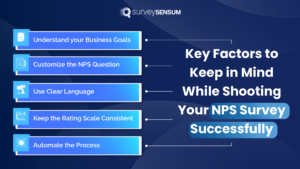
- Understand your Business Goals: Before customizing the NPS question, you need to understand the specific needs and goals of your business.
- Customize the NPS Question: Once you understand your business goals, you can customize the NPS question to align with those goals.
- Use Clear Language: It is essential to use clear and simple language in the NPS question to avoid confusion and ensure that customers can understand the question easily.
- Keep the Rating Scale Consistent: It is important to use a consistent rating scale across all NPS surveys to maintain uniformity and make it easier to compare results.
- Automate the Process: Find a robust feedback platform that automates the entire process of sending surveys, gathering feedback in real-time, and giving you quick analysis.
Launch your NPS Program with SurveySensum
An efficient NPS program can help you understand and improve customer satisfaction, loyalty, and retention. With the right survey platform, you can design and deploy effective NPS surveys, gather feedback in real-time, and analyze results to identify actionable insights.
At SurveySensum, we offer a comprehensive survey platform that includes customizable NPS surveys, real-time alerts, and advanced analytics features. The platform is designed to help businesses of all sizes launch successful NPS programs and drive meaningful improvements in customer satisfaction and loyalty. Also, the tool enables you to do trend analysis, historical data analysis, and NPS benchmarking.
So, leverage the advantage of NPS just like Manulife Indonesia did.






